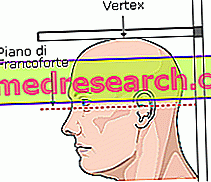Seated stature and physical constitution
In sports medicine, seated stature is an anthropometric value of primary importance for assessing the aptitude for various sports disciplines. Knowing the seated height allows us to evaluate the relationship between the length of the lower limbs and the length of the torso (head + trunk). On this basis it is possible to classify the subjects into:
- NORMOLINEES: the length of the lower limbs is equal to the bust;
- LONGILINEI: the length of the lower limbs is greater than the bust;
- BRACHILINEI: the length of the lower limbs is less than the bust.
- The normolineo (or normotipo) is suitable for the practice of all sports, in particular speed and middle distance disciplines.
- The long-limbed (or longitipo) prefers endurance and jumping sports.
- The brevilineo (or brachitipo) excels in strength sports, such as weight lifting.
Numerous are the indices proposed by the various authors to establish the individual body constitution. Among these, the best known is the skeletal - cormic index, given by the formula:
(sitting height / standing height) x 100
On the basis of this classification criterion, the terms normolinei, longilinei and brevilinei (or brachitipi) are respectively replaced by mesaticormic, macrocormic and brachicormic.
| TYPES OF CONSTITUTION ACCORDING TO THE SKELICAL INDEX | ||
| Constitution | Men | Women |
limbed (long limbs in relation to the trunk) | ≤51 | ≤52, 4 |
Normolinea (limbs and trunk in right proportion) | 51.1 to 53.1 | 52.5 to 54.5 |
brevilineo (short limbs in relation to the trunk) | ≥ 53.2 | ≥ 54.6 |
How to measure sitting stature
The seated stature is the measure of the distance between the highest point of the head, oriented according to the Frankfurt plane, and the support base of the box or stool.

To measure the seated stature, a box or chair is required, and a stadiometer possibly replaced by a metric tape aligned to the ground and perpendicular to it.
It is advisable to note the stature sitting in the morning, since in the evening there may be a significant decrease (due to the dehydration of the intervertebral discs). In any case, especially in assessing the growth of a child, at subsequent checks it is important to measure height always at the same time.



